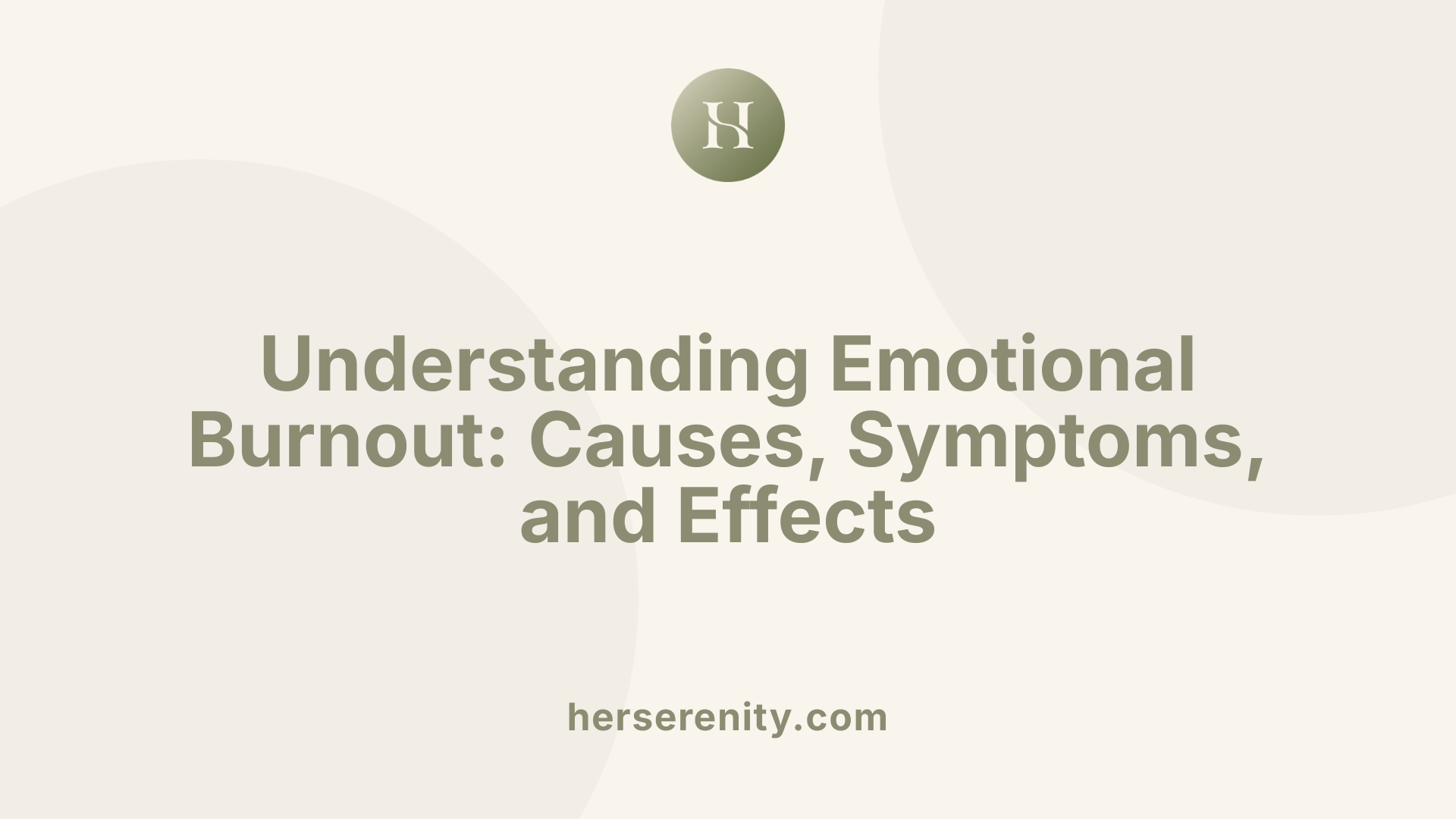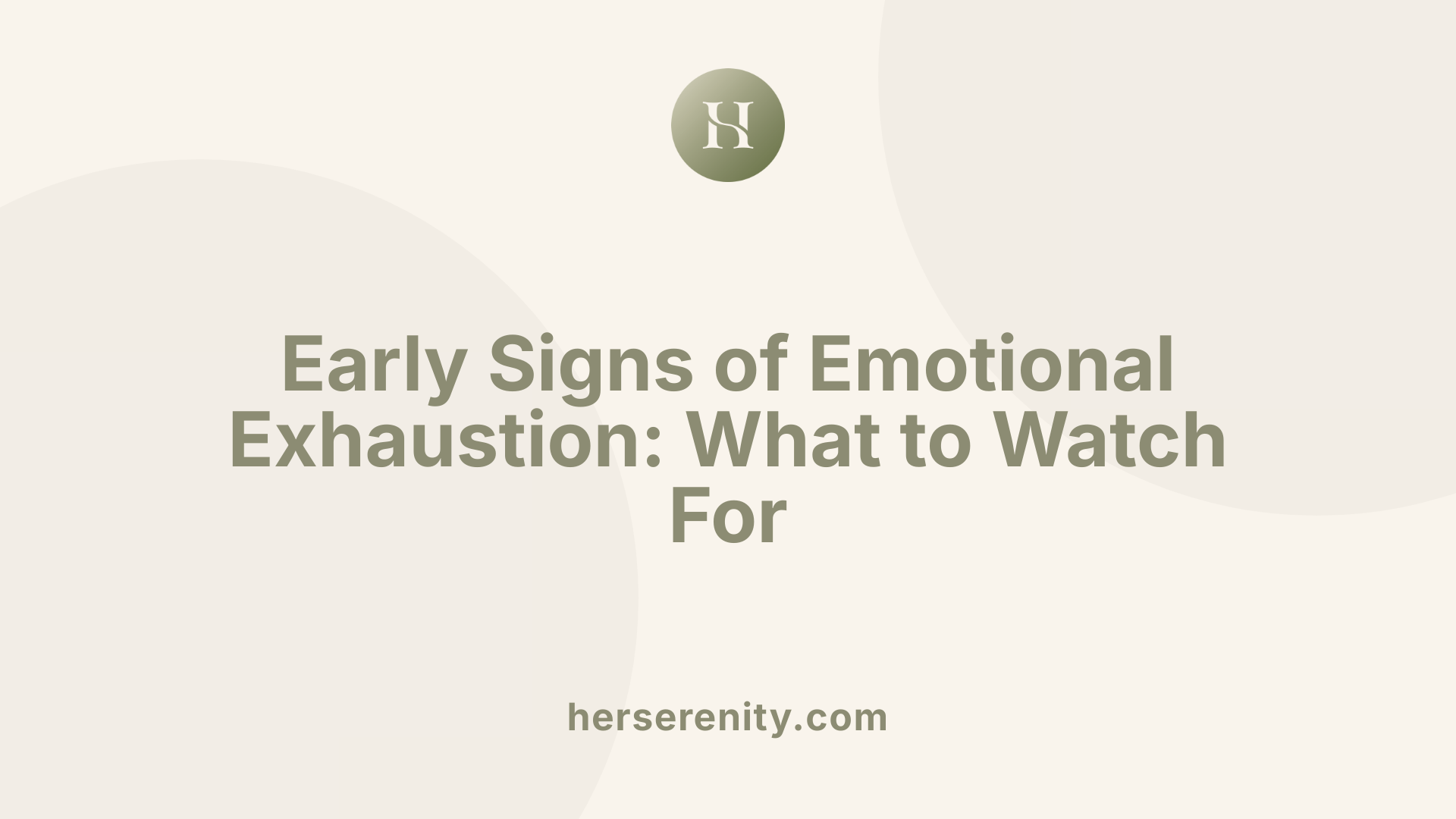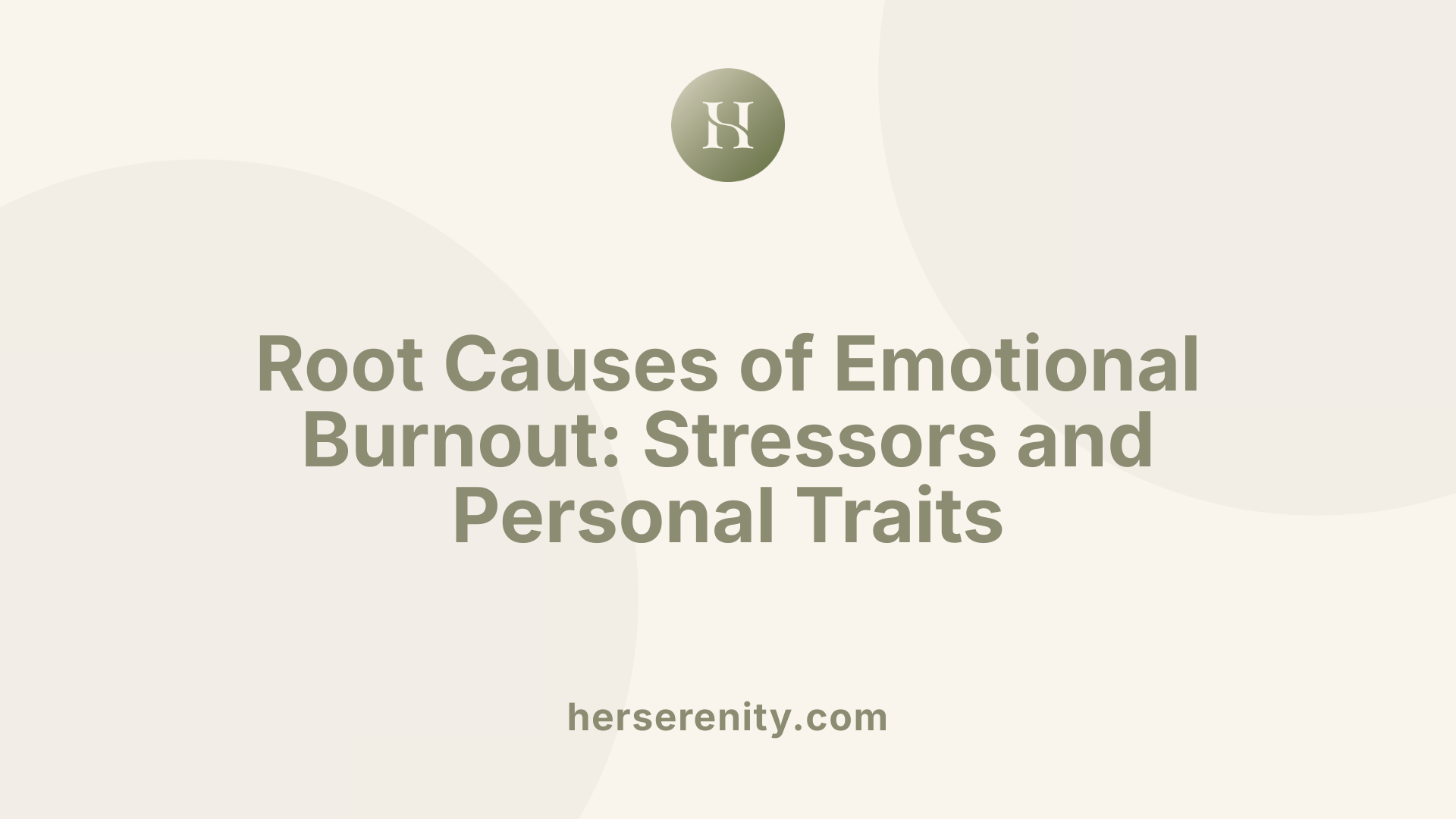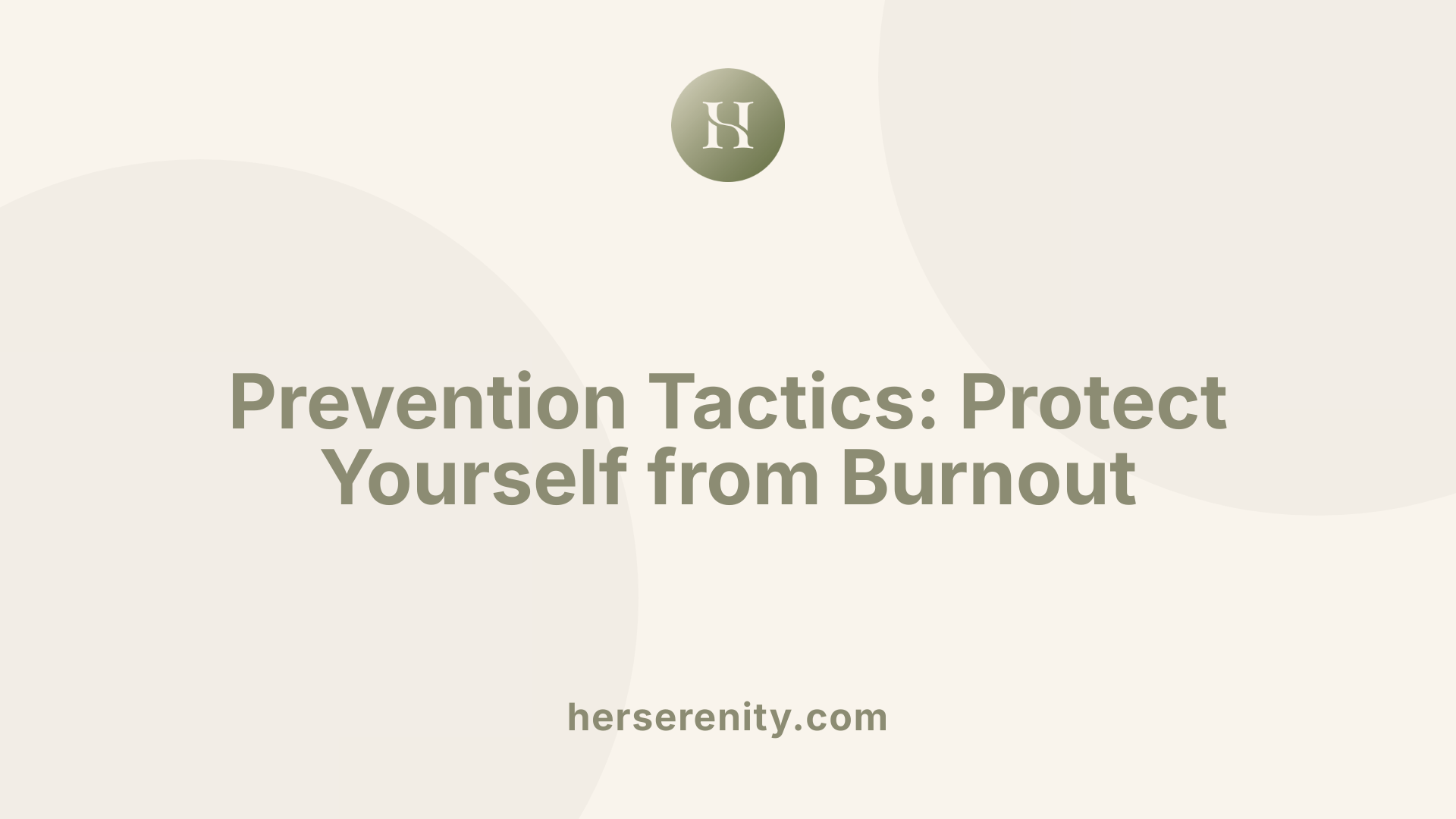How to Recognize and Prevent Emotional Burnout
Understanding Emotional Exhaustion and Practical Prevention Strategies

Introduction to Emotional Burnout and Its Importance
Emotional burnout is a widespread phenomenon characterized by chronic emotional, physical, and mental exhaustion resulting from prolonged stressors. Recognizing the early signs and implementing effective prevention strategies are essential for maintaining mental health, productivity, and overall well-being. This article explores the nature of emotional burnout, how to identify its symptoms, and practical methods to prevent and recover from it.
Defining Emotional Burnout and Its Consequences

What is emotional burnout?
Emotional burnout is a state of chronic emotional and physical exhaustion that results from prolonged exposure to stressful or demanding situations. It often manifests as feelings of fatigue, detachment, irritability, and a low sense of accomplishment. This condition arises when emotional resources are depleted, making it difficult to cope with everyday responsibilities and diminishing overall motivation.
How does burnout differ from stress and depression?
While stress is usually a response to external pressures that can be managed over short periods, burnout develops gradually due to persistent stress without sufficient relief or support. Unlike depression, which is a mental health disorder characterized by pervasive sadness and loss of interest, burnout is primarily related to external stressors and work-related issues. Burnout features emotional fatigue, cynicism, and a diminished sense of efficacy, but it can also lead to depression if left unaddressed.
What are the long-term effects of burnout?
If unchecked, burnout can have serious long-term consequences. These include deteriorating mental health, increased susceptibility to illnesses like colds or flu, and the development of chronic health conditions such as cardiovascular disease. It can also impair personal relationships, reduce productivity, and lower overall quality of life. Recognizing early signs and implementing preventative strategies are crucial in avoiding these adverse outcomes.
What steps can be taken to prevent burnout and promote emotional well-being?
Preventing burnout involves setting healthy boundaries around work and personal life, such as defining clear work hours and taking regular breaks. Effective communication about workload and needs helps manage expectations and avoid overload.
Incorporating self-care routines—like maintaining adequate sleep, engaging in balanced nutrition, exercising regularly, and practicing mindfulness—can significantly reduce stress levels.
Being attentive to early warning signs, such as feeling constantly tired, cynical, or emotionally detached, enables prompt action. Taking time for hobbies, social interactions, and relaxation techniques can reinforce emotional resilience.
Building support networks with friends, family, and professionals offers vital emotional outlets. Developing stress management skills, practicing gratitude, and aligning daily activities with personal values cultivate positivity.
Creating an organized, manageable schedule and learning to say ‘No’ to additional demands prevent overwhelm. Unplugging from work during personal time and maintaining work-life separation further support well-being.
In summary, proactive self-awareness, healthy lifestyle choices, open communication, and social support are essential strategies in fostering emotional health and preventing burnout.
Recognizing the Signs and Symptoms of Emotional Exhaustion

What are the common signs and symptoms of emotional exhaustion?
Emotional exhaustion manifests in various ways, affecting both mind and body. Common emotional signs include feelings of hopelessness, helplessness, increased cynicism, and a pessimistic outlook on life and work. Individuals often experience heightened anxiety, irritability, depression, tearfulness, and emotional numbness, which can make them feel trapped or powerless.
Physically, emotional exhaustion may present as persistent tiredness, frequent headaches, sleep disturbances, muscle tension, and stomach issues. These physical symptoms often accompany emotional turmoil, intensifying the sense of being drained.
Behaviorally, those experiencing emotional exhaustion might struggle with completing daily tasks, miss deadlines, and experience a drop in motivation. Social withdrawal becomes common as individuals may distance themselves from friends, family, and colleagues, further deepening feelings of isolation.
Overall, these symptoms collectively diminish well-being, impair daily functioning, and can lead to burnout if left unaddressed. Recognizing these signs early is critical for seeking appropriate help and initiating recovery.
Understanding Causes and Contributing Factors

What causes emotional exhaustion?
Emotional exhaustion results from prolonged exposure to stressors that overwhelm an individual’s ability to cope effectively. Common sources include high-pressure jobs that demand intense mental effort over long hours, caregiving responsibilities that constantly drain emotional resources, financial hardships creating persistent anxiety, and personal relationship issues that foster ongoing conflict or worry.
Beyond external stressors, certain personality traits can elevate the risk. For instance, perfectionism often drives individuals to overextend themselves in pursuit of flawlessness, neglecting their self-care. A lack of autonomy in work or personal settings leaves individuals feeling powerless and trapped. Unresolved conflicts and insufficient social support exacerbate feelings of isolation and emotional drain.
Maintaining a delicate balance between efforts—such as work, caregiving, or personal goals—and opportunities for recovery, rest, and self-care is crucial. When this balance tips unfavorably, emotional exhaustion and burnout can develop. Neglecting routines like healthy eating, regular exercise, adequate sleep, and mindfulness increases vulnerability to these conditions.
In summary, emotional exhaustion stems from a combination of chronic stressors like demanding work and personal responsibilities, ingrained personality traits, and lifestyle imbalances. Addressing these factors proactively can help prevent progression to burnout.
Stages of Burnout: From First Signs to Severe Exhaustion

Honeymoon phase
Burnout often starts subtly during the honeymoon phase, when individuals feel motivated, optimistic, and eager to achieve goals. During this period, they may overlook signs of overexertion because of high enthusiasm and dedication.
Onset of stress
As workload and responsibilities increase, signs of stress become more evident. Individuals may experience rising fatigue, irritability, and decreased optimism. They might begin noticing difficulty concentrating, minor sleep disturbances, or feelings of being overwhelmed.
Chronic stress and burnout
If stress persists without meaningful relief, it develops into chronic stress. Symptoms intensify and include physical fatigue, headaches, muscle tension, and emotional exhaustion. Mood swings, irritability, cynicism, and detachment from work or life become more prominent.
Full-blown burnout and depression
Without intervention, chronic stress can escalate into full burnout, characterized by feelings of helplessness, hopelessness, and detachment. It can lead to severe mental health issues such as depression, where motivation and energy are severely depleted. Individuals may withdraw from social interactions, neglect self-care, and experience a significant decline in performance.
Understanding these stages helps in recognizing early warning signs, enabling timely actions to prevent progression into severe exhaustion or depression. Early identification and intervention are crucial in managing burnout effectively.
| Stage | Symptoms | Possible Outcomes | Intervention Tips |
|---|---|---|---|
| Honeymoon phase | Enthusiasm, high motivation | High energy levels, optimism | Set healthy boundaries, self-reflect |
| Onset of stress | Fatigue, irritability, decreased optimism | Increased stress, minor health issues | Prioritize self-care, stress management |
| Chronic stress and burnout | Physical and emotional fatigue, cynicism | Decline in performance, emotional exhaustion | Seek social support, professional help |
| Full exhaustion/depression | Feelings of hopelessness, withdrawal | Depression, severe health issues | Professional therapy, lifestyle changes |
Recognizing each stage and its signposts allows individuals to seek help early, making recovery from burnout more manageable and preventing severe health consequences.
Implementing Preventive Measures and Early Intervention

What are effective strategies to prevent emotional burnout?
Preventing emotional exhaustion and burnout is largely about proactive self-care and awareness. The first step is developing strong self-awareness and reflection skills to recognize early warning signs such as persistent fatigue, irritability, or feelings of cynicism. By identifying these symptoms early, individuals can implement strategies to manage their stress levels before burnout becomes severe.
Managing workload and re-evaluating goals are crucial. It’s important to set realistic expectations and boundaries, and to avoid overcommitment. Breaking larger tasks into manageable steps and prioritizing responsibilities can help maintain control over daily demands.
Building resilience and mastering stress management techniques makes a significant difference. Regular physical activity, such as exercise or yoga, combined with good sleep hygiene and a balanced diet, enhances physical health and emotional stability. Practicing mindfulness—through meditation, deep breathing, or relaxation exercises—can reduce stress and foster a sense of calm.
Additionally, engaging in enjoyable hobbies and social activities provides emotional relief and reconnects individuals with sources of joy outside work or caregiving roles. Seeking support from friends, family, or mental health professionals offers valuable reassurance and perspective.
Reframing attitudes towards work and personal responsibilities helps foster a healthier outlook, emphasizing progress rather than perfection and recognizing personal limits.
In essence, consistent self-care, early detection of stress symptoms, setting healthy boundaries, and utilizing stress reduction techniques create a strong foundation for resilience. Combining these practices minimizes the risk of burnout and promotes sustained well-being.
For more strategies on preventing emotional burnout and building resilience, consider exploring resources under 'Strategies to prevent emotional burnout and build resilience' which offer detailed approaches tailored to individual needs.
Recovering from Emotional Exhaustion: Key Approaches
How can one recover from emotional exhaustion?
Recovery from emotional exhaustion involves a combination of self-care practices, lifestyle adjustments, and seeking appropriate support. The first step is to prioritize self-care activities, such as maintaining a nutritious diet, engaging in regular exercise, ensuring enough sleep, and practicing mindfulness techniques like meditation or deep breathing exercises. These habits help replenish physical and emotional energy.
Setting clear boundaries to limit exposure to stressors is also essential. This may mean delegating tasks, reducing workload, or learning to say no to additional commitments that cause overwhelm. Participating in activities that promote joy, relaxation, and emotional replenishment—such as hobbies, nature walks, or listening to music—can significantly improve mood and resilience.
Seeking support from trusted friends, family, or mental health professionals provides emotional validation and guidance during recovery. Therapy, especially cognitive-behavioral therapy (CBT), can help address negative thought patterns and develop effective coping strategies.
By consistently applying these approaches, individuals can gradually recover from emotional exhaustion. Over time, these practices restore motivation, improve mental and physical health, and strengthen resilience against future stressors. Overall, recovery is a gradual process that requires patience, self-compassion, and proactive effort.
Promoting Self-Care and Healthy Boundaries
What are effective self-care routines?
Engaging in regular self-care practices is fundamental to preventing emotional exhaustion. This includes maintaining a nutritious diet, exercising regularly, ensuring adequate sleep, and practicing mindfulness techniques such as meditation or deep breathing. Engaging in hobbies and activities that bring joy can replenish emotional reserves and reduce stress. Taking breaks during the day, setting aside time for relaxation, and prioritizing mental health through activities like journaling or listening to music are also beneficial. Consistently integrating these routines into daily life helps boost resilience and keeps emotional energy levels balanced.
Why is work-life balance important?
A healthy work-life balance is crucial in protecting against burnout and emotional exhaustion. It involves allocating sufficient time to work responsibilities while also making space for personal interests, family, and rest. When work encroaches on personal time, it can lead to chronic stress and fatigue. Establishing clear boundaries between professional and personal life reduces this risk, improves overall well-being, and enhances productivity. A balanced lifestyle ensures that individuals do not feel overwhelmed by work demands, thereby preserving mental health and emotional strength.
How can setting healthy boundaries improve well-being?
Setting boundaries in both personal and professional life is an effective strategy to safeguard mental health. It involves clearly defining limits regarding workload, social interactions, and emotional energy allocation. For example, turning off work emails after hours or declining additional commitments helps prevent emotional overload. Boundaries foster respect in relationships by establishing realistic expectations and reducing conflicts. They empower individuals to prioritize their needs, avoid overcommitment, and maintain a sense of control. As a result, healthy boundaries reduce feelings of resentment, stress, and fatigue, supporting long-term emotional resilience.
What are the benefits of setting boundaries to prevent emotional exhaustion?
Setting boundaries provides essential protection for mental and emotional well-being by clearly delineating personal limits and expectations. By establishing these boundaries, individuals can prevent overcommitment, reduce feelings of being taken advantage of, and manage stress more effectively. Boundaries promote healthier relationships, fostering respect and understanding, which in turn decreases feelings of resentment and burnout. They also empower individuals to prioritize their needs, reclaim their time and energy, and maintain a sense of identity and self-worth. Overall, setting and maintaining boundaries is a vital self-care strategy that helps prevent emotional exhaustion and supports long-term emotional resilience.
When to Seek Professional Help and Long-term Outlook
Indicators for Professional Intervention
Recognizing when burnout or emotional exhaustion requires professional support is crucial for effective recovery. If symptoms such as persistent feelings of hopelessness, detachment from activities, or emotional numbness continue despite efforts to manage stress through lifestyle changes, it is time to seek help. Physical signs like ongoing headaches, fatigue, sleep disturbances, or increased susceptibility to illness also signal the need for professional assessment.
Behavioral changes such as withdrawing from social contacts, decreased work performance, or reliance on substances like alcohol or drugs to cope further indicate that support from a mental health specialist is necessary. Early intervention can help prevent the progression into more severe mental health conditions like depression or chronic anxiety.
Benefits of Therapy and Counseling
Engaging with mental health professionals provides personalized strategies to manage symptoms. Therapy options like cognitive-behavioral therapy (CBT) are effective in helping individuals challenge unhelpful thoughts, develop coping skills, and better manage stress. Counseling can also facilitate emotional processing, aid in re-establishing work-life balance, and rebuild resilience.
In addition, therapists can recommend relaxation techniques, mindfulness practices, and lifestyle adjustments tailored to individual needs. Connecting with a professional also offers a safe space to express feelings, gain support, and work through underlying issues contributing to burnout.
Long-term Prognosis and Management
With appropriate interventions, recovery from emotional exhaustion and burnout is highly achievable. The outlook is optimistic as long as individuals actively address stressors and adopt healthier habits. Long-term management includes ongoing self-care, regular social support, and periodic mental health check-ins.
Preventing relapse involves maintaining boundaries, practicing stress reduction techniques, and recognizing early signs of overwhelm. By integrating these practices into daily life, individuals can sustain their mental well-being and prevent future episodes of exhaustion or burnout.
| Aspect | Description | Additional Notes |
|---|---|---|
| Recognition | Early signs include fatigue, irritability, detachment, and sleep issues | Early detection improves prognosis |
| Professional Support | Therapy (CBT, counseling), medication if needed | Supports emotional and behavioral recovery |
| Self-care | Lifestyle changes, stress management, social support | Essential for ongoing well-being |
| Prevention | Boundaries, mindfulness, routine self-assessment | Minimizes risk of recurrence |
Summary and Resources for Support
Recognizing the early signs of emotional burnout and implementing comprehensive strategies for prevention are crucial steps toward safeguarding mental health. A proactive approach that combines self-care, boundary-setting, resilience-building, and professional support can foster emotional well-being and resilience. Remember, recovery is possible through deliberate lifestyle adjustments, seeking help when needed, and maintaining a balanced and fulfilling life.
References
- Emotional Exhaustion: What It Is and How to Treat It
- What is emotional exhaustion?
- How to Recognize the Signs of and Prevent Burnout
- 5 Ways to Prevent and Overcome Burnout
- Burnout: Symptoms, Risk Factors, Prevention, Treatment
- Preventing Burnout – CALE Learning Enhancement
- Understanding Burnout: Recognizing Its Signs and ...
- Emotional exhaustion: 10 tips to relieve emotional burnout
- How to spot and prevent burnout



































































































